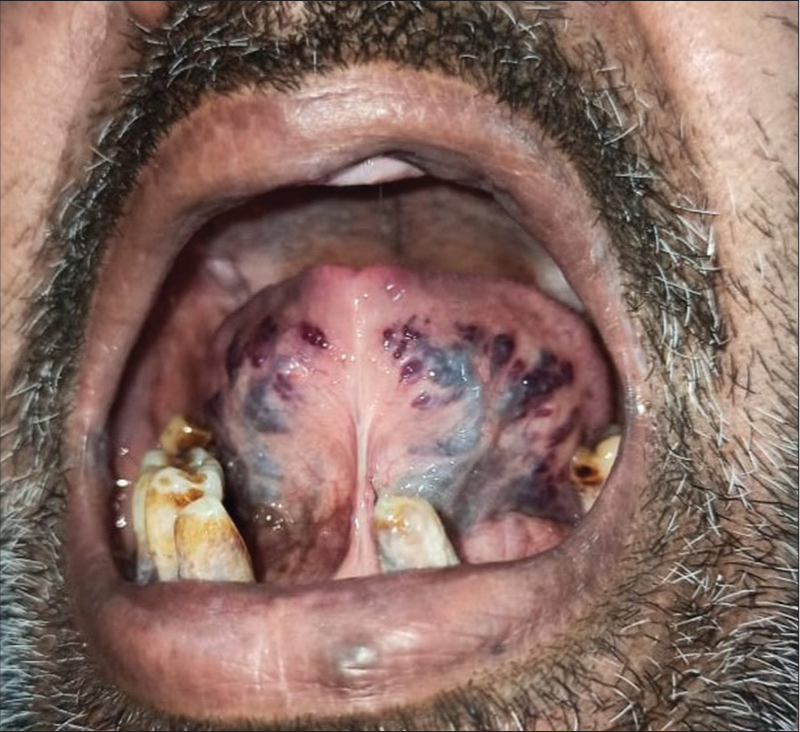Translate this page into:
Caviar tongue: A commonly missed lingual physiological variation

*Corresponding author: Mohita Mahajan, Department of Dermatology, Government Medical College, Amritsar, Punjab, India. mohitamahajan96@gmail.com
-
Received: ,
Accepted: ,
How to cite this article: Mahajan M, Mahajan BB. Caviar tongue: A commonly missed lingual physiological variation. CosmoDerma. 2023;3:180. doi: 10.25259/CSDM_229_2023
A 58-year-old man presented with asymptomatic tortuous swellings on the undersurface of the tongue since one-and-a-half years [Figure 1]. There was no history of bleeding. He had no systemic complaints or history of serious illness. On examination, dilated tortuous red blood vessels were seen along the lateral portions of the undersurface of the tongue. Similar changes in other mucous membranes or skin surfaces were not observed. Based on the history, clinical findings, and examination, a diagnosis of caviar tongue was made. The patient was counselled regarding its benign nature and being a physiological age-related phenomenon.

- Dilated tortuous vessels seen along the lateral portions of the undersurface of the tongue.
The caviar tongue, also known as lingual varicosities or sublingual varices, is considered a physiological change associated with senile elastotic degeneration of the sublingual veins. Advancing age is a predisposing factor due to tissue loosening and damage to elastic tissue in blood vessels. It can be associated with portal hypertension or superior vena cava syndrome (increased venous pressure).[1] Hence, examination of the tongue and its undersurface is very essential, as it can help detect systemic illnesses such as anemia, cyanosis, nutritional deficiencies, infections, and tumors. Since the supporting connective tissue is fragile, even minor stimuli can cause dilatation and varicose changes. Sublingual varices can be confused with tumors such as hemangioma, lymphangioma, Kaposi’s sarcoma, and melanoma.[1] On histology, the caviar tongue is a dilated vein without inflammatory changes.
Sublingual varices usually need no treatment but only reassurance regarding their benign nature. This condition is being reported to highlight the benign physiological manifestation of the aging process, which is often overlooked by dermatologists.
Ethical approval
The Institutional Review Board approval is not required.
Declaration of patient consent
The authors certify that they have obtained all appropriate patient consents.
Conflicts of interest
There are no conflicts of interest.
Use of artificial intelligence (AI)-assisted technology for manuscript preparation
The authors confirm that there was no use of artificial intelligence (AI)-assisted technology for assisting in the writing or editing of the manuscript and no images were manipulated using AI.
Financial support and sponsorship
Nil.
References
- Disorders of mucous membranes In: Andrews’ diseases of the skin: Clinical dermatology (10th ed). Philadelphia, PA: W.B. Saunders Co; 2006. p. :803.
- [Google Scholar]





